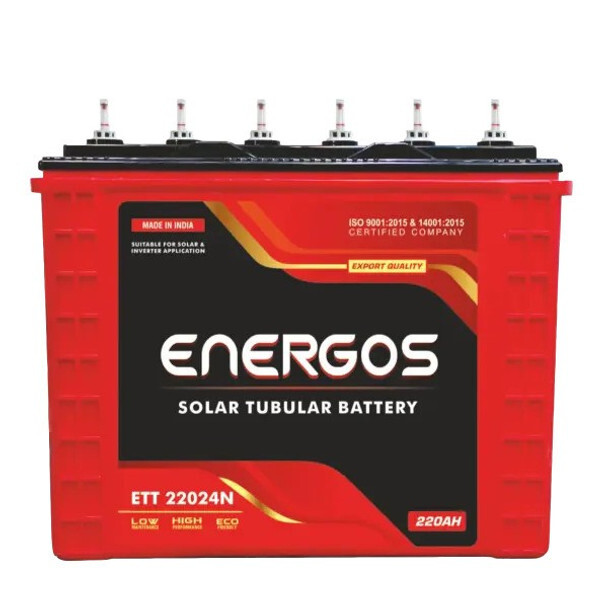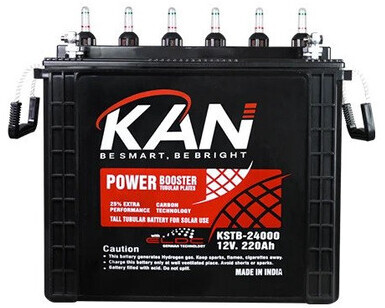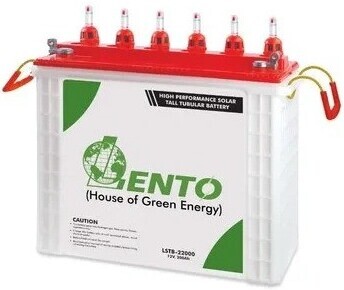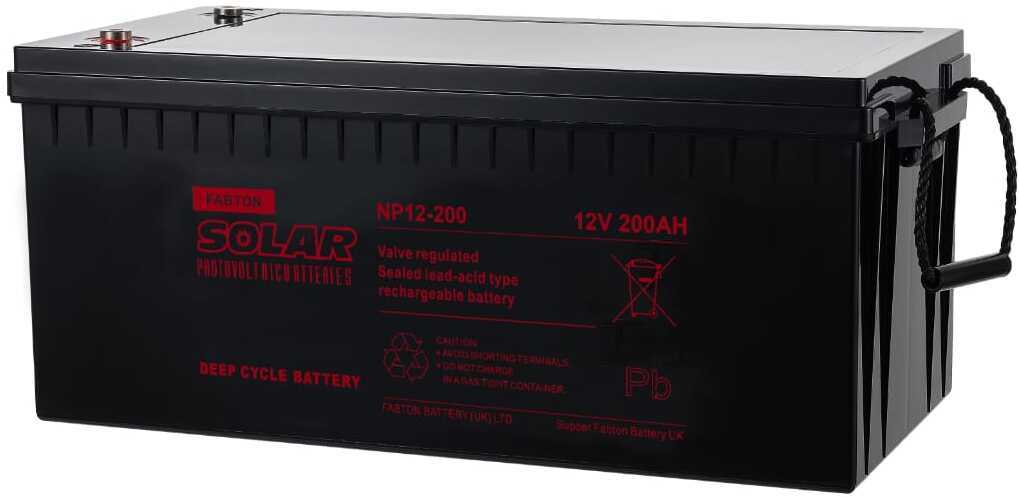How to Calculate the Right Inverter Battery Capacity for Your Needs
Introduction
Selecting the correct inverter battery capacity is crucial for ensuring uninterrupted power supply for homes, businesses, and industrial operations. Using an undersized battery may lead to frequent power failures, while an oversized battery increases costs without providing additional benefits.
For industries such as manufacturing plants, welding workshops, and commercial facilities, an accurate calculation of battery capacity minimizes downtime and ensures optimal performance. This guide provides a structured approach to calculating inverter battery capacity based on power needs, usage duration, and efficiency factors.
Key Takeaway
-
Understand Your Power Requirements – Determine the total wattage of all devices you need to power and the expected backup duration to calculate the right battery capacity.
-
Use the Correct Formula – The formula (Total Load in Watts × Backup Time in Hours) ÷ Battery Voltage helps estimate the required battery capacity in ampere-hours (Ah).
-
Factor in Efficiency Losses – Batteries are not 100% efficient; consider losses due to heat, internal resistance, and depth of discharge (DOD) to ensure an accurate capacity estimate.
-
Match Battery Voltage with Inverter Specifications – Choose batteries that align with your inverter's voltage rating (e.g., 12V, 24V, or 48V) to ensure proper functionality and efficiency.
Energos 12V-220AH Tubular Battery
Understanding Inverter Battery Capacity
What Is Inverter Battery Capacity?
The capacity of an inverter battery, measured in ampere-hours (Ah), determines how much power it can store and supply over time. A higher Ah rating means the battery can provide backup power for a longer duration before requiring a recharge.
The basic formula for calculating battery capacity is:
Battery Capacity (Ah) = (Total Power Consumption in Watts × Backup Hours) ÷ Battery Voltage
This formula helps determine how long an inverter can run before the battery is depleted.
For instance, if the total power consumption of appliances is 1000 watts and the required backup time is 4 hours, using a 12V battery, the calculation will be:
(1000 × 4) ÷ 12 = 333Ah
This means a 333Ah battery is required to provide a 4-hour backup for a 1000W load.
Read more...How Inverter Batteries Contribute to Uninterrupted Industrial Operations
Battery Capacity and Backup Duration
Battery capacity directly affects backup duration. A 100Ah battery can last around 4 to 6 hours for light household loads such as fans and LED bulbs but only 30 to 60 minutes when used for heavy industrial loads such as welding machines. A 200Ah battery extends backup time further, allowing 8 to 12 hours for small appliances and around 90 to 120 minutes for industrial use.
A higher battery capacity results in a longer backup period, but selecting the right capacity depends on power consumption, required backup time, and efficiency losses.
Kan 12v. 220AH Solar Tubular Battery
Key Factors to Consider When Calculating Inverter Battery Capacity
Power Requirement Calculation
To determine the battery size, the total wattage of all appliances that need backup must be calculated. For example, a basic setup consisting of LED bulbs, a ceiling fan, a refrigerator, a laptop, and a welding machine might consume approximately 1400 watts in total. This total power requirement is the basis for battery capacity calculations.
Backup Time Requirement
The number of hours of backup required significantly impacts battery selection. If the total power needed is 1400 watts and backup is required for 4 hours, the battery must sustain this load without failure.
Battery Efficiency and Depth of Discharge (DOD)
Battery efficiency determines how much stored power is actually usable. Lead-acid batteries typically have 80-85% efficiency, whereas lithium-ion batteries offer 90-95% efficiency. The depth of discharge (DOD) also affects calculations, as lead-acid batteries should not be discharged below 50-60%, while lithium-ion batteries allow deeper discharges up to 80-90%.
Understanding these factors ensures that the chosen battery provides reliable performance without frequent replacements.
Read more...How to Maintain Your Inverter Battery for Long-Term Welding Use
Choosing the Right Battery Type
When selecting an inverter battery, understanding the differences between battery types is essential. The two most common options are lead-acid batteries and lithium-ion batteries.
Lead-acid batteries are more affordable and widely available, but they require regular maintenance, have a shorter lifespan, and take longer to charge. They are best suited for low to medium-power applications where cost is a major consideration.
Lithium-ion batteries, on the other hand, offer superior efficiency, longer lifespan, and faster charging times. They also support deeper discharge levels, meaning they provide more usable power per charge cycle. While they are more expensive upfront, their long-term reliability and performance make them ideal for industries requiring consistent power backup, such as welding operations and heavy machinery.
Lento Tubular Battery 220ah 12v
Adjusting Battery Size for Efficiency Losses
Theoretical calculations provide an estimate of battery capacity, but real-world efficiency losses must also be considered. Batteries lose power due to heat, aging, and internal resistance.
For instance, if a system requires 300Ah, and the chosen battery has an efficiency of 85%, the actual required capacity should be adjusted as follows:
Adjusted Capacity = Required Capacity ÷ Efficiency
= 300Ah ÷ 0.85
= 353Ah
Thus, to achieve a true 300Ah output, a 353Ah battery is needed to compensate for efficiency losses.
Matching Battery Capacity with Inverter Specifications
An inverter’s battery capacity must match its voltage rating. If an inverter operates at 24V, the battery bank should be designed accordingly. For instance, using two 12V batteries in series provides 24V, while a 48V system requires four 12V batteries. Ensuring proper voltage alignment prevents system overloads and ensures stable performance.
Environmental Considerations
The operating environment affects battery performance. High temperatures can accelerate battery degradation, while cold environments may reduce battery efficiency. For industrial applications, choosing a temperature-resistant battery and placing it in a well-ventilated space extends lifespan and ensures consistent output.
Final Considerations for Choosing the Right Inverter Battery
When selecting an inverter battery, always consider long-term reliability, warranty coverage, and maintenance requirements. Investing in a high-quality battery prevents frequent replacements and reduces downtime in industrial operations. Additionally, regular inspections and proper charging practices help extend battery life and maintain optimal efficiency.
Fabton 12V-220AH Deep Cycle Solar Battery
Frequently Asked Questions
1. How do I calculate the right inverter battery capacity for my business?
To calculate the correct battery capacity, determine your total power requirement (in watts), multiply it by the desired backup time (in hours), and divide by the battery voltage. Consider efficiency losses and depth of discharge for accurate sizing.
2. What type of inverter battery is best for industrial use?
Lithium-ion batteries are ideal for industrial use due to their high efficiency, long lifespan, and deep discharge capabilities. However, lead-acid batteries can be a cost-effective option for less demanding applications.
3. How does depth of discharge (DOD) affect battery capacity?
DOD refers to how much of a battery’s capacity can be used before recharging. Lead-acid batteries should only be discharged to 50-60% to extend lifespan, while lithium-ion batteries can be discharged up to 80-90% without significant degradation.
4. Can I use multiple batteries to increase backup time?
Yes, you can connect multiple batteries in series (to increase voltage) or parallel (to increase capacity) to extend backup time. However, ensure proper configuration to match your inverter’s voltage requirements.
5. Where can I buy high-quality inverter batteries in Nigeria?
You can purchase reliable inverter batteries from GZ Industrial Supplies.
Related Articles
Expert Tips for Choosing the Best Inverter Battery for Your Industry
Battery Safety Tips for Welding Professionals: Avoiding Overheating and Power Loss
How to Maintain Your Inverter Battery for Long-Term Welding Use
Conclusion
In summary, calculating the right inverter battery capacity involves understanding your power requirements, backup duration, battery type, and system efficiency. By following the steps outlined in this guide, you can ensure that you select the correct battery size, resulting in a reliable and efficient power backup system that will meet your needs.
Ready to find the perfect inverter battery for your needs? Visit GZ Industrial Supplies today! We offer a wide range of high-quality inverter batteries, and our experts are here to guide you through the selection process. Don’t hesitate to reach out for personalized advice on choosing the best solution for your energy needs!
Recent Posts
-
How Safe is Teepol Detergent for Food Prep Areas and Kitchen Use?
Introduction In environments where hygiene is non-negotiable like food prep areas and kitchens the c …May 06, 2025 -
Teepol for Commercial Cleaning: Top Institutional Use Cases and Benefits
Introduction In the demanding world of institutional and commercial cleaning, versatility, safety, a …May 05, 2025 -
Why Epochem Teepol Is the Best Multipurpose Detergent in Nigeria [2025 Review]
Introduction In 2025, with increased hygiene awareness across homes, industries, and institutions in …May 02, 2025








![Why Epochem Teepol Is the Best Multipurpose Detergent in Nigeria [2025 Review] Why Epochem Teepol Is the Best Multipurpose Detergent in Nigeria [2025 Review]](https://cdn11.bigcommerce.com/s-x3ki4mm/images/stencil/160w/uploaded_images/why-epochem-teepol-is-the-best-multipurpose-detergent-in-nigeria-2025-review-.jpg?t=1746460056)